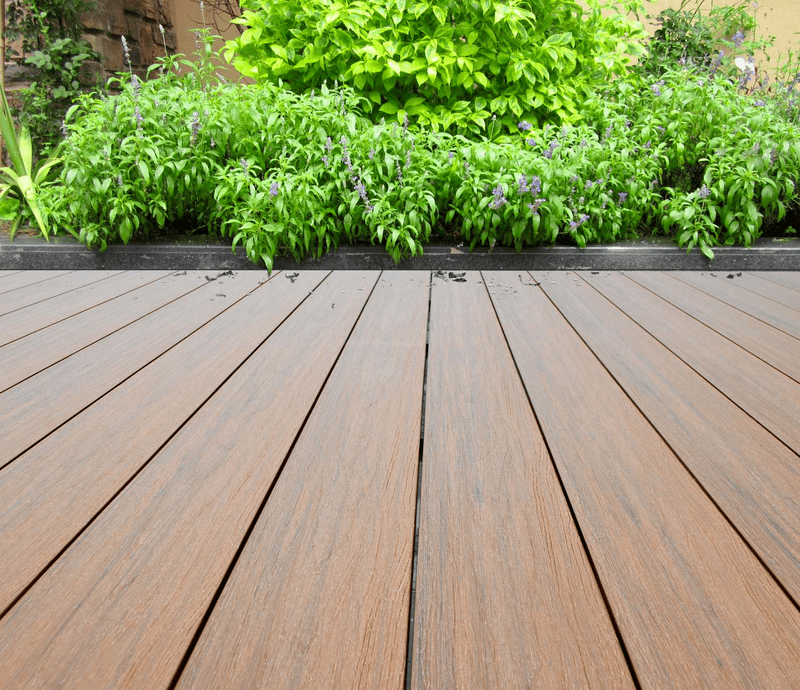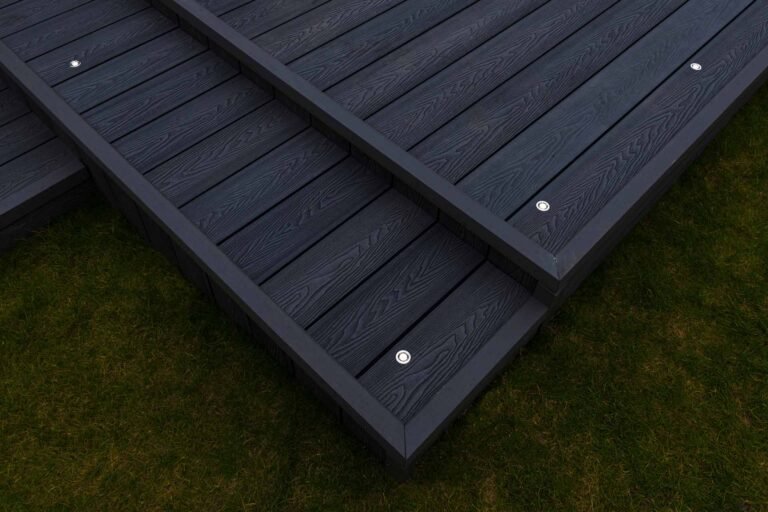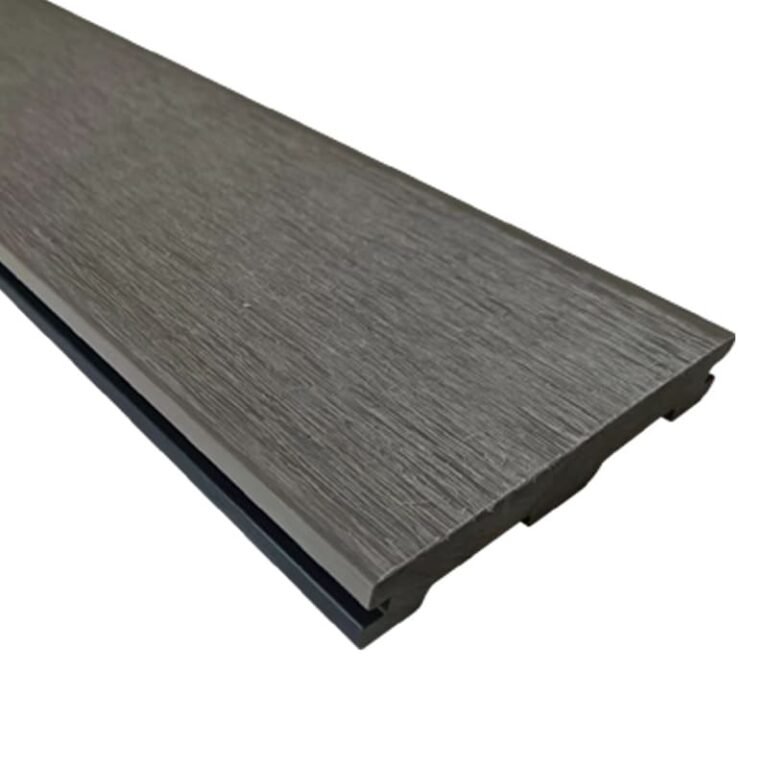Choosing the wrong composite decking can lead to unsold stock and unhappy customers. I'll share my 12 years of experience to help you select the best products for your business.
To select the best composite decking, focus on four key things: the core structure (hollow vs. solid), the edge profile (grooved vs. square), the color, and the standard lengths. Matching these to your local market's needs and installation habits is the real key to success.
This might seem like a lot to think about. But don't worry, it's simpler than it looks. I've broken down each point to make it easy for you to understand. Getting these details right will give you a big advantage in your market. Let's start with the first big question.
Which is better, hollow or solid composite decking?
Choosing between hollow and solid decking can feel confusing. You don't want to stock a product that isn't right for your customers' projects, leading to either performance issues or overspending.
Neither hollow nor solid decking is always "better." Hollow decking is more affordable and perfect for most residential projects[^1]. Solid decking is stronger and required for commercial or high-traffic areas, but it costs more. The best choice depends entirely on the project's use and budget.
In my 12 years in this industry, this is one of the first questions importers ask me. The answer always comes down to who your main customer is. Both types have a place in the market, but they serve different needs. For wholesalers, knowing these differences helps you stock smarter and advise your clients better. Most of your sales will likely come from one category, but having options is good.
Hollow vs. Solid Decking: Key Differences
We manufacture two main types of hollow decking: one with circular hollow channels and one with square channels. The circular design offers a bit more structural stability, while the square design is usually more competitive on price. Both are excellent for typical home decks. Solid decking is a different product entirely. It's heavier, denser, and built for places that get a lot of foot traffic, like public walkways, restaurants, and marinas. Because it uses more material, it's also more expensive.
Here’s a simple table to help you decide what to stock:
| Feature | Hollow Core Decking | Solid Core Decking |
|---|---|---|
| Best Use | Residential decks, patios, balconies | Commercial spaces, public areas, stairs |
| Strength | Good for standard home use | Excellent for heavy foot traffic |
| Cost | More affordable, better price point | Higher initial investment |
| Weight | Lighter, easier to handle and install | Heavier, requires more labor to install |
Most of my partners find success by stocking both types, but they focus their marketing on hollow decking because it meets the needs of the larger residential market.
Which is better, grooved or square edge composite decking?
The edge of a decking board seems like a small detail. But picking the wrong one can frustrate installers and ruin the final look of a project, hurting your reputation.
Grooved-edge decking is often preferred because it allows for hidden fastener systems, creating a clean, screw-free surface. Square-edge decking is installed with traditional screws and is mainly for finishing touches like stair treads or framing the deck. The best choice depends on local installation habits.
The choice between a grooved or square edge profile is all about the installation method and the final look. I've spoken with hundreds of installers over the years, and the trend is clear. Homeowners love a clean-looking deck without any visible screw heads. This is why hidden fastening systems have become so popular, and you need grooved boards to use them. This is a major selling point you can pass on to your customers.
Installation and Appearance: Grooved vs. Square Edge
Grooved boards have a channel cut down each side. A special clip fits into this groove and fastens the board to the joist below. The next board slides over the other side of the clip, completely hiding the fastener. Square edge boards don't have this groove. They are installed just like traditional wood, with screws driven through the face of the board into the joists. While this is a proven method, it leaves visible screw heads on the surface.
Here's how they compare:
| Feature | Grooved Edge Decking | Square Edge Decking |
|---|---|---|
| Installation | Hidden fastener clips | Face-screwing (visible screws) |
| Appearance | Clean, smooth, modern surface | Traditional look with visible hardware |
| Primary Use | Main surface of the deck | Picture framing, stair treads, fascia |
Even if grooved decking is your main seller, you will still need to stock square-edge boards. They are essential for finishing the project. Installers use them to create a solid border around the deck—a technique called picture framing—and for building stairs. So, a good strategy is to stock a majority of grooved boards and a smaller amount of matching square-edge boards.
What is the best color for composite decking?
Choosing which colors to stock is a big gamble for any wholesaler. An unpopular color can sit in your warehouse for months, tying up your cash and taking up valuable space.
There is no single "best" color. Popular choices depend on regional tastes and local home styles. The safest strategy is to research your market. Start by stocking classic, versatile colors like grey and brown, as they are popular almost everywhere and are proven sellers.
Over the years, I've seen color trends[^2] come and go. The key is not to chase trends, but to understand what your local market wants. What sells well in a sunny coastal region in Australia might not be popular in a forested area in the UK. My advice is always the same: do your homework before you place a large order. It’s the most important step to picking winning colors.
How to Choose Winning Colors for Your Market
Doing market research is easier than you think. Go to the big home improvement and building supply stores in your area. What colors of decking do they have on display? Check their websites to see their best-sellers. Drive through new housing developments and see what colors builders are using for decks and outdoor spaces. This simple research will give you a very clear idea of what local customers are buying.
Based on my experience shipping to partners worldwide, here are some general tips:
- Coastal Areas: Lighter greys and sandy beige tones are often popular here. They create a beachy, airy feel.
- Inland & Wooded Areas: Richer browns, deep greys, and reddish wood tones are often preferred. They blend well with the natural environment.
If you are just starting out, you don't need to stock ten different colors. That's a huge risk. I always recommend starting with a small, proven palette. A light grey, a dark grey (like charcoal), a classic brown, and a darker brown (like coffee) is a perfect starting range. These four colors cover the most popular choices in almost any market. At Veejoy, we can provide you with sample packs to show your customers and test the market before you commit to a full container.
What dimension of composite decking are good for selling?
As an importer, you need to be efficient. Ordering the wrong decking lengths[^3] can waste valuable container space, and that directly increases your shipping cost for every single board.
The best decking lengths for selling are those that are popular locally and also maximize container space. We produce standard lengths like 2.2m, 2.9m, 3.6m, 4.8m, and 5.4m because they are designed for efficient shipping. Researching popular sizes in your market is key.
Your profit margin as an importer depends heavily on logistics. Your goal is to lower your cost-per-board, and one of the best ways to do that is to fill every shipping container perfectly. Wasted space is wasted money. That is why we, as a manufacturer, have optimized our production around specific lengths that fit perfectly into standard shipping containers. When you order these lengths, you get the most value for your shipping costs.
Optimizing Your Imports with the Right Decking Lengths
Here is a breakdown of how our standard lengths are designed to maximize your container load. This is something I work on with my partners all the time to help them be more competitive.
| Container Size | Optimal Board Lengths | Why It Works |
|---|---|---|
| 20-foot | 2.2m, 2.9m, 5.4m | These lengths, or combinations of them, minimize wasted space in a standard 20ft container. |
| 40-foot | 3.6m, 4.8m | These are ideal for maximizing the load in a 40ft high cube container, which is common. |
Before you place your first order, do the same research you did for colors. Visit local suppliers or check their websites. What lengths are they advertising? Your customers are used to buying certain sizes for their projects. While we can produce custom lengths, starting with these standard, logistics-friendly sizes is almost always the smartest and most profitable choice for a new importer.
Conclusion
Choosing the right composite decking is simple when you focus on structure, profile, color, and length. Get these four things right for your market, and you will build a successful business.
[^1]: Discover the ideal decking solutions tailored for residential applications.
[^2]: Stay updated on color trends to stock the most appealing options for your customers.
[^3]: Find out the most efficient lengths to stock for optimal shipping and sales.









